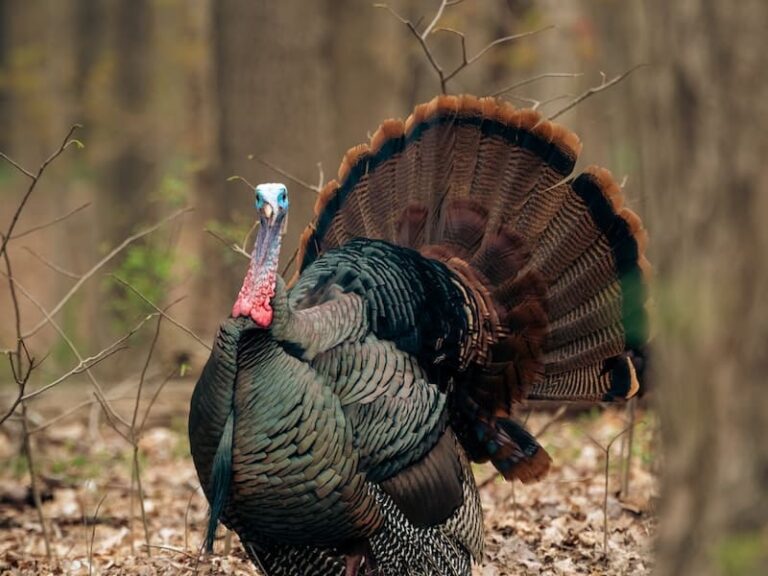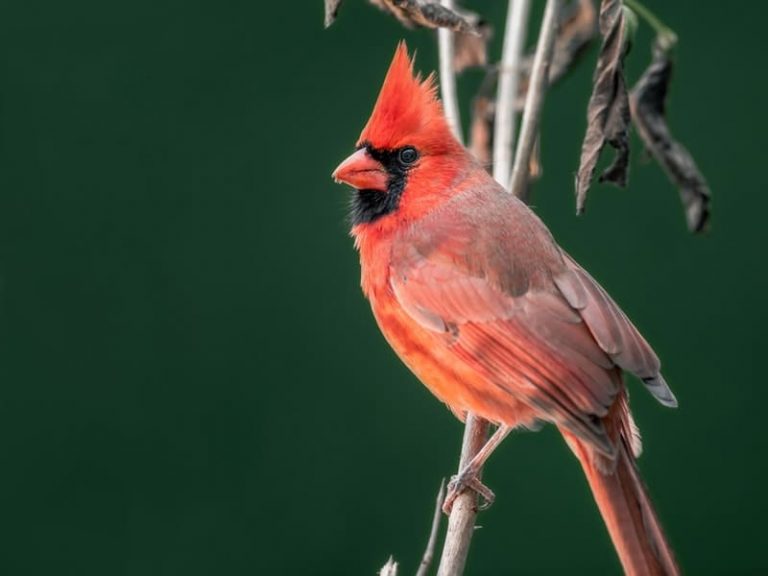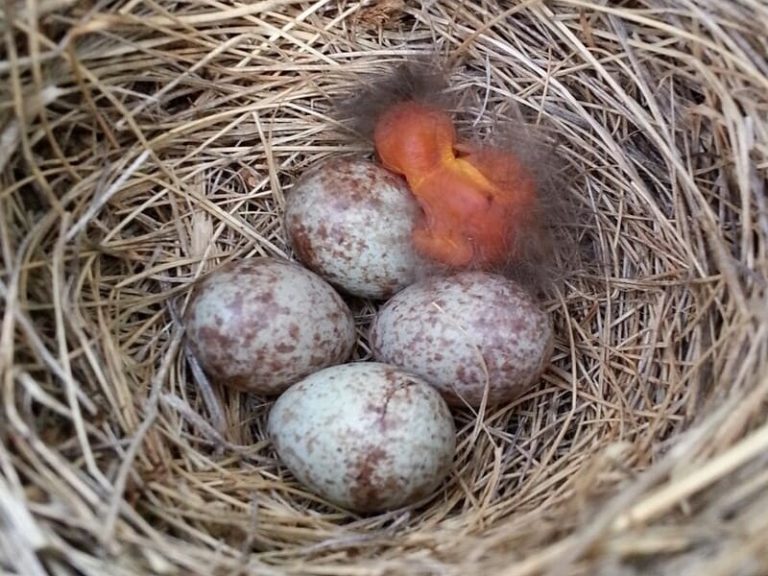When and Where to Find the Common Starling in America?

The Common Starling, or Sturnus vulgaris, is a bird species that is widely distributed across various regions. It is a medium-sized passerine bird in the starling family, Sturnidae. The Common Starling is known for its noisy nature, especially in communal roosts and other gregarious situations, with an unmusical but varied song.
According to Britannica, the Common Starling was first introduced to North America in 1890 by bird enthusiast Eugene Schieffelin. Schieffelin released 60 European Starlings in Central Park in an attempt to introduce all the birds mentioned in Shakespeare’s works to America. From there, the Common Starling population grew rapidly, and they are now found in many parts of North America.
The introduction of Common Starlings to North America has had both positive and negative impacts. While they are appreciated for their presence and beauty, they have also been known to cause damage to crops and compete with native bird species for resources. In this article, we will explore the origins of the Common Starling, when and where they were introduced to America, their impact on the native ecosystem, and ways to control their population.
Contents
Key Takeaways
- The Common Starling is a widely distributed bird species found across various regions.
- They were first introduced to North America in 1890 by bird enthusiast Eugene Schieffelin.
- While appreciated for their presence and beauty, they have also been known to cause damage to crops and compete with native bird species for resources.
Origins of Common Starling
The Common Starling (Sturnus vulgaris) is a medium-sized passerine bird that is native to Europe and Asia. It was introduced to North America in the late 1800s, where it is now considered an invasive species.
According to popular myth, Common Starlings were first introduced to North America in 1890 by bird enthusiast Eugene Schieffelin. He is said to have released 60 European Starlings into Central Park in New York City, with the intention of introducing every bird species mentioned in the works of William Shakespeare to North America. However, it is not clear how much of this story is true, and there is evidence to suggest that Common Starlings were actually introduced to North America multiple times by different individuals.
Regardless of their exact origins, Common Starlings quickly became established in North America and are now found throughout the continent. They are particularly common in urban and suburban areas, where they can be seen feeding on insects, fruit, and seeds.
Despite their success in North America, Common Starlings are not universally loved. They are known to compete with native bird species for food and nesting sites, and their large flocks can cause damage to crops and other agricultural resources. As a result, efforts have been made to control their populations in some areas.
Overall, the Common Starling’s introduction to North America is an interesting example of the unintended consequences of human actions on the environment.
General Description and Scientific Classification
The common starling, scientifically known as Sturnus vulgaris, belongs to the family Sturnidae. These small to medium-sized songbirds have a compact and stocky build, short broad wings, and a short tail. They are known for their iridescent plumage, which is black with a metallic green and purple sheen.
Adult common starlings are about 20 cm (8 inches) long and have a wingspan of 37–42 cm (14.5–16.5 inches). Males and females are similar in appearance, but males are slightly larger and have longer bills. Juvenile common starlings have duller plumage and a shorter bill than adults.
Common starlings are native to Europe, Asia, and North Africa. They were introduced to North America in the late 19th century, and are now found throughout most of the continent. They prefer open habitats such as fields, meadows, and pastures, but can also be found in urban areas.
The scientific classification of common starlings is as follows:
| Kingdom | Animalia |
|---|---|
| Phylum | Chordata |
| Class | Aves |
| Order | Passeriformes |
| Family | Sturnidae |
| Genus | Sturnus |
| Species | Sturnus vulgaris |
In addition to their scientific classification, common starlings are also known by a number of other names, including European starling (in North America), and simply as the starling (in Great Britain and Ireland).
When Were They Introduced in America
The common starling (Sturnus vulgaris) is a bird species that is native to Europe, Asia, and North Africa. It was first introduced to North America in the late 19th century. According to Britannica, the common starling was deliberately introduced to North America in 1890 by bird enthusiast Eugene Schieffelin.
Schieffelin was a member of the American Acclimatization Society, a group that sought to introduce European flora and fauna to North America. Schieffelin had a particular interest in introducing birds mentioned in the works of William Shakespeare to the United States. As a result, he released 60 European starlings in New York City’s Central Park in 1890.
From there, the common starling quickly spread across North America. By the 1920s, it had reached the West Coast and had become one of the most common bird species in the United States. Today, the common starling is found throughout much of North America, from Alaska to Mexico.
The introduction of the common starling to North America has been controversial. Some people view the bird as an invasive species that competes with native bird species for food and nesting sites. Others appreciate the bird’s adaptability and vocal talents. Regardless of one’s opinion, it is clear that the common starling has had a significant impact on North American avian ecosystems since its introduction over a century ago.
Where Are They Found in America
Common starlings are widely distributed in America. They were introduced to North America in the late 19th century and have since spread throughout the continent. They can be found in a variety of habitats, including urban, suburban, and rural areas.
Common starlings are most abundant in the eastern United States, particularly in the Northeast and Midwest. They are also found in the Pacific Northwest, California, and the Gulf Coast. In Canada, they are most common in the southern provinces, but can be found as far north as the Northwest Territories.
Within their range, common starlings have a preference for certain habitats. They are often found in open areas with short vegetation, such as grasslands, agricultural fields, and suburban lawns. They also use trees and buildings for nesting and roosting.
In urban areas, common starlings are often seen in large flocks, roosting in trees and on buildings. They are known for their noisy behavior and can be a nuisance to some people. In rural areas, they are less common but can still be found in large flocks, especially during the winter months.
Overall, common starlings are a widespread and adaptable species in America, found in a variety of habitats throughout the continent.
Impact on Native Ecosystem
The common starling, also known as the European starling, is a non-native invasive species in North America. Its introduction has had a significant impact on the native ecosystem.
Competition for Nest Sites
One of the most significant impacts of the common starling on the native ecosystem is its competition for nest sites. Starlings are known to compete with native bird species for nest cavities, which can lead to a decline in the native bird population. They are also known to displace other cavity-nesting birds such as woodpeckers, bluebirds, and tree swallows.
Agricultural Damage
The common starling is also known to cause significant agricultural damage. They feed on a wide variety of crops, including fruits, vegetables, and grains. Their feeding habits can lead to significant crop losses, which can have a significant economic impact on farmers.
Disease Transmission
The European starling is known to be a carrier of several diseases that can be harmful to humans and animals. They can transmit diseases such as salmonella, E. coli, and West Nile virus. This can have a significant impact on the health of both humans and animals in the affected areas.
Overall Impact
Overall, the introduction of the common starling to North America has had a significant impact on the native ecosystem. Their competition for nest sites, agricultural damage, and disease transmission have all had negative effects on the native bird population, agricultural industry, and public health.
Controlling the Population of Common Starling
The common starling, an invasive bird species in America, has caused problems for native bird populations. The bird has a high reproductive rate and can outcompete other species for food and nesting sites. As a result, controlling the population of common starlings has become a priority for conservationists.
Lethal Control
One method of controlling the population of common starlings is through lethal control. This involves the use of traps, shooting, or poisoning to reduce the number of birds. However, this method is controversial and can be difficult to implement effectively. In addition, it can have unintended consequences, such as harming non-target species or causing public backlash.
Non-Lethal Control
Non-lethal control methods are becoming increasingly popular due to their effectiveness and ethical considerations. One such method is the use of bird repellents, which can deter common starlings from roosting or nesting in certain areas. Another method is the use of exclusion devices, such as netting or wire mesh, to prevent the birds from accessing certain areas.
Integrated Pest Management
Integrated pest management (IPM) is a holistic approach to controlling common starling populations. IPM combines various control methods to achieve long-term, sustainable results. This approach involves monitoring the bird populations, identifying key areas of concern, and implementing a range of control measures. By combining lethal and non-lethal methods, IPM can be an effective way to manage common starling populations while minimizing harm to other species.
In conclusion, controlling the population of common starlings is crucial for protecting native bird species. While lethal control methods can be effective, non-lethal methods and IPM are becoming increasingly popular due to their effectiveness and ethical considerations. By implementing a range of control measures, conservationists can achieve long-term, sustainable results.
Conclusion
In conclusion, the Common Starling is a widely distributed bird species found across various regions. Understanding their geographic distribution, habitat preferences, behavior, and conservation status is essential to appreciate their presence in America.
The introduction of the Common Starling to North America in the late 19th century was driven by a desire to bring the bird species from Shakespeare’s plays to the continent. Sixty European starlings were taken to NYC’s Central Park in 1890. Since then, their population has boomed, and they have filled fields and parks with their aerial acrobatics and melodious songs. However, their increasing numbers caused conflicts with native species, resulting in ecological imbalances.
Britannica Quiz Animal Factoids Natural history states that the Common Starling is a sturdy bird about 21.5 cm (about 8.5 inches) in length. Its plumage is primarily black, with an iridescent sheen that colors the feathers purple and green in certain lights. After moulting in the late summer and fall, it takes on a brown and white speckled appearance.
The Common Starling has left a long-lasting impact on America’s ornithology. While they are not native to the continent, they have become an integral part of the American bird population. Understanding their behavior, habitat preferences, and conservation status is crucial to appreciate their presence and protect them from potential threats.






